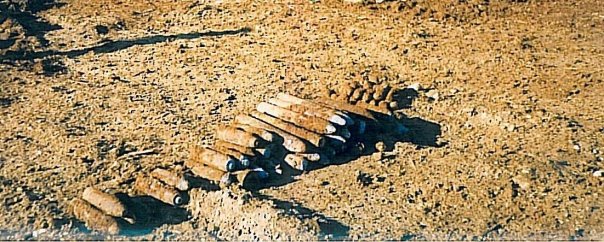13/04/2023
“If you ever come across anything suspicious like this item, please do not pick it up, contact your local law and/or enforcement agency for assistance”.
The aftermath of conflict continues to inflict harm on civilians, even long after hostilities have ended. Deadly weapon contamination by unexploded munitions is wreaking havoc on communities around the world. This hidden danger lurks on or beneath the surface, waiting to cause death and destruction at any moment. The problem of weapon contamination is a global crisis, affecting millions of people who are forced to live in fear every day. Mines and explosive remnants of war continue to pose a threat to the safety and well-being of innocent civilians. It’s time for the world to take action and address this ongoing crisis once and for all.
Here are five critical questions and answers about explosive remnants of war.
What are explosive remnants of war?
Explosive remnants of war (ERW) are explosive munitions that have failed to explode after being fired or launched (unexploded ordnance, UXO) or have been left behind by a party to the conflict unused (abandoned explosive ordnance, AXO). Artillery shells, grenades, mortar shells, cluster munitions, rockets, missiles, and other explosive munitions – as well as improvised explosive devices (IEDs), depending on how they are designed and function – may all become ERW. Explosive munitions of every kind have a failure rate that can vary greatly, from one to forty per cent, depending on diverse factors such as the age of the munition, how it is stored and used, the quality of design and production, the type of material or soil at the point of impact, atmospheric conditions and the competence of the user. Those that fail to explode as intended when used may go off at an unpredictable point in time, killing or injuring their unsuspecting victims.
What is the human cost of weapon contamination and how does it affect people’s health, safety, and daily lives?
In many parts of the world, across all geographic regions, ERW litter landscapes that are no longer battlefields, and continue to kill and maim thousands of civilians long after active hostilities have ended. A large proportion of victims are children. According to some, over half of the world’s countries are contaminated by landmines and ERW. ERW impede access to healthcare facilities and other essential services, prevent the proper operation and maintenance of critical infrastructure, block transportation and escape routes, and hinder the delivery of life-saving humanitarian assistance. In the aftermath of armed conflicts, UXO continue to hamper agriculture and trade, delay reconstruction efforts, and prevent the return of displaced persons. Weapon contamination poses a long-term obstacle to socio-economic development. The use of heavy explosive weapons in populated areas, especially cities and other urban centres, multiplies the human cost, because the number of direct and indirect victims in such environments is higher and the difficulty of clearing UXO is much greater. Recent and ongoing conflicts, be it in the Middle East, the international armed conflict between Russia and Ukraine, or elsewhere, are clear examples.
What obligations does international humanitarian law impose on belligerents with regard to explosive remnants of war?
Under IHL, parties to an armed conflict that use explosive munitions or are in control of areas affected by ERW must:
Dear editors, Biography of a bomb is aimed at highlighting the danger caused by unexploded bombs. Moreover, the most important aspect is that we work completely non profit, what drives us is raising awerness about this topic. We make use of your pictures and articles, but we need them to put a context in how findings are done. We trust in your understanding. We will (and we always do) cite the source and the author. We thank you for your comprehension.





